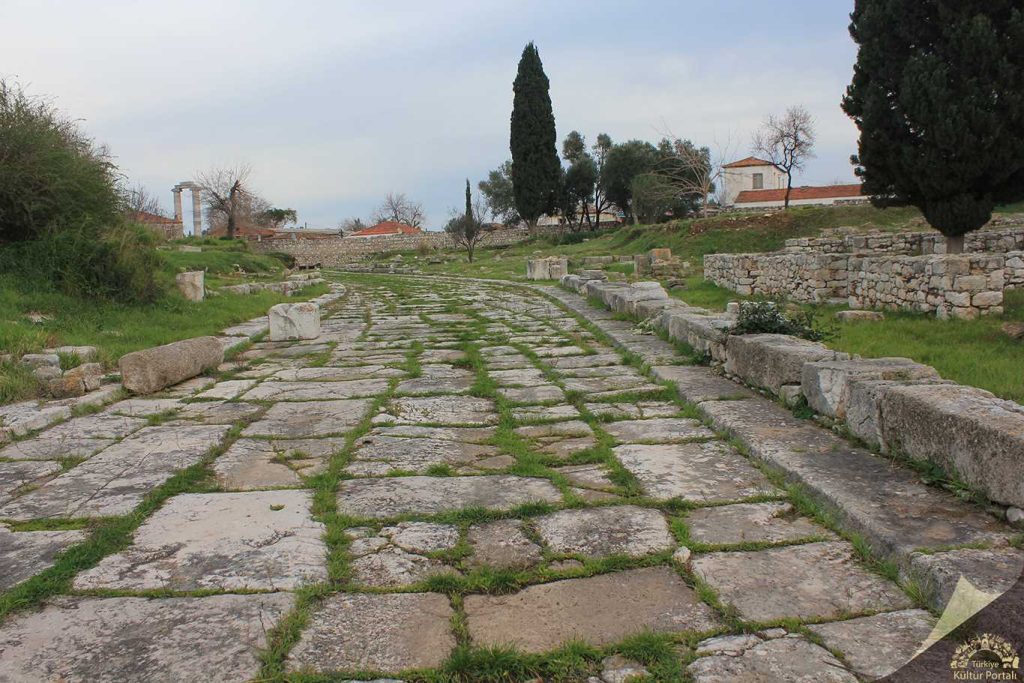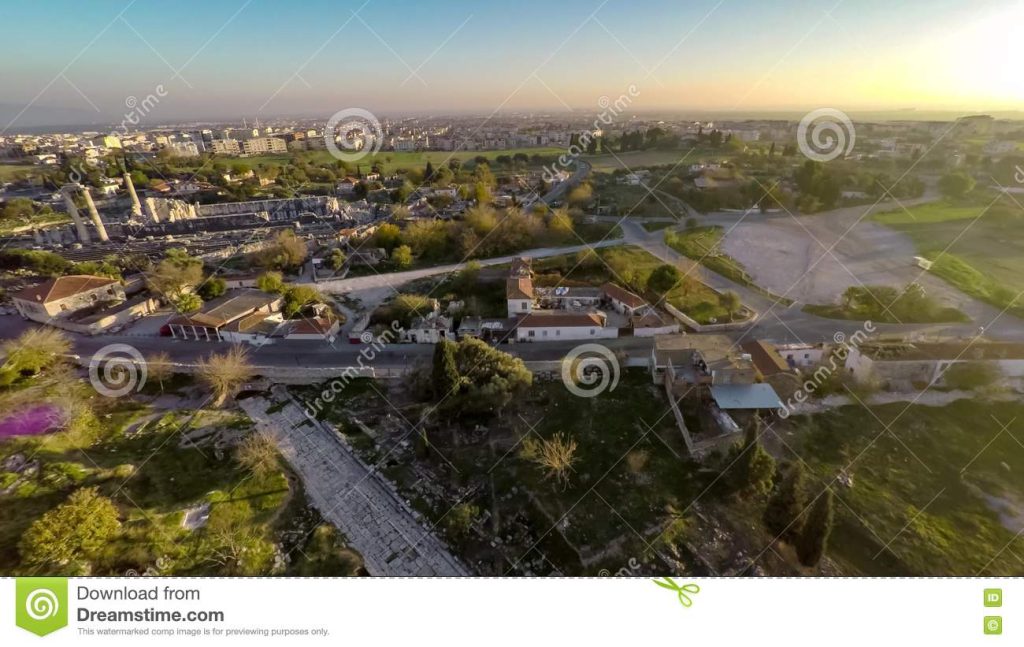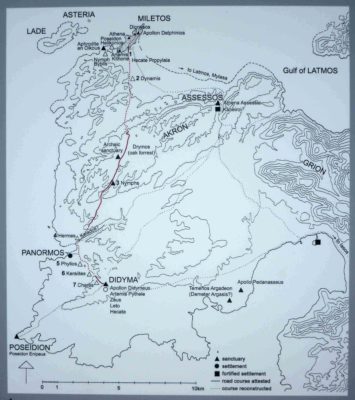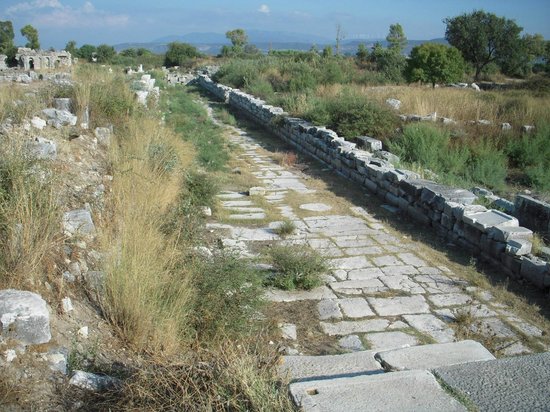It was at this time last year that I had first heard, from a Turkish friend who works alongside the archaeologists, the whisper that the ‘small finds’ house, next to the Temple of Apollo precinct, was to have it’s contents moved to the Miletus Museum or the Excavation House in Didyma, Glenn Maffia writes.
Upon inquiring as to why this should be necessary he told me the house was to be opened to the public. Intriguing, but no great revelation therein. Though when he expanded his reasoning to reveal this would be a prelude to the Sacred Road being reopened to the public my happiness reached euphoric levels.
Evaporating hopes
All summer long I visited and checked on any apparent progress, though could not perceive anything was even remotely changing to give evidence of any opening of the road.

Gradually, I slowly fell into that fatalism, so familiar in Didyma, that this was just another empty rumour.
Even when the archaeologists arrived during their excavation season nothing appeared to point to the Sacred Road. My optimism evaporated in the heat of summer.
Earlier this year I sought once again for information at the Miletus Museum, though left only with the hard fought admission that it was the Director of Excavations preference to keep the Sacred Road out of bounds to the public. Naturally, I wrote to her for an explanation of this dire course action, or ‘inaction’ to be more accurate. I received no reply.
I do not wish to be frivolous about this as too many people have lost their lives, but the truth that the Covid-19 virus plunged so many into emergency ‘lockdown’ allowed me the time and energy to search for any relevant news in regards to the Sacred Road.
That ‘Eureka’ moment
Being unable to move from the confines of my own home, and desperately missing my frequent sorties to the Apollon site, I combed through the Internet. I have my reservations about such technology, but it most definitely has a pertinent plus side.
Dead ends abounded, though perseverance, probably through pure chance, presented me with that ‘Eureka’ moment.

I had happened upon a relevant publication from the German Archaeological Institute, which pertains to the Temple of Apollo and, more pertinently, the plans afoot for the closed section of the Sacred Road.
The publications are from ‘Forschungs Berichte 2019 Des Deutschen Archaologischen Instituts’, whilst the titles and authors of the reports are ‘Site Management und Tempelkonsolidierung von Elgin von Gaisberg und Helga Bumke’ (pages 212-223) and ‘Die Heilige Straße im Bereich des Apollontempels von Hüseyin Cevizoğlu’ (pages 224-228).
Exquisite and ambitious
Most importantly what is revealed is that the archaeologists have the most exquisite and ambitious plans to open up the Sacred Road to the public. This is in direct contrast to the erroneous information which I received at the Miletus Museum concerning the Director of Excavations at Didyma. Though, I concede, that may have suffered as a consequence of imperfect translation.
I, still, have not received any correspondence from the German Archaeological Institute, which irks me somewhat, though now I no longer require any answers as these papers cover all I need to know. My excitement has been thoroughly re-ignited.

Though the intentions are clarified, in some detail, the timeframe is not even hinted at. This, one must suppose, is because we are now heading into the political arena of events.
Discussions must now assume the air of the scientific opinion measured against a social backdrop and any consequences which may well be forthcoming. Delicate debates, indeed.
These opposing stances do not have, I feel, any bearing on whether the Sacred Road is opened. I feel that is a given. Why not, it shall benefit the village immensely in terms of visitors and revenues.
The problematic area is will this, and how this, shall affect the ‘fabric’ of the existing village?
Personally, I do not think this is a problem, but people, those who live there may beg to differ. And they have every right to air their concerns.
Viable options
The exciting proposal is to link the Temple of Apollo to the Sacred Road. This could be done “by means of a new visitor guidance system”, which could entail relaying this information upon another board in the vicinity of the proposed entrance gates to the Sacred Road or physically.
Now the physical idea is truly exhilarating and I suspect that this could be done in one of two
ways.
Firstly obtain a ticket in the usual way at the existing entrance kiosk before viewing the temple and then making sure that you retain the ticket to then allow you enter upon the Sacred Road site later (much the same procedure when viewing the Milesian site and then the Museum). I am sure that would work satisfactorily, not too complicated and comparatively efficient.
Though I sense, through reading between the lines, that a preferred choice (certainly mine) would be to link the two sites into one unified whole. Easily done as the ‘finds house’ of the temple and the current Sacred Road gates are almost adjacent.
The only problem with this is that would necessitate the closure of the road which runs through the village. I can understand that people none too conversant with the back streets of the village would be appalled at this prospect for the villagers, though I am conversant, and so are the archaeologists, there shall always be vehicle access to the village through these back roads or lanes.
One must remember that this ‘main’ thoroughfare was, quite recently, permanently closed to traffic. I recall thinking how much safer this made the area to visitors to the entire site, indeed, this area was gloriously sedate. Though I suspect that it was the protestations emanating from the surrounding shops and cafés that caused the reversal of this inspired idea, therefore, the traffic rumbles through once more. Slowly, but surely, affecting the ancient structure’s foundations.
Paradise regained
These papers are witness that the aspirations of the archaeologists have not fallen from their lofty goal to treat history with the respect it assuredly deserves, albeit with a caveat that would placate disgruntled profiteers.
One point of which I am completely in the dark about is how forcefully have the archaeologists pressed the Turkish authorities? Resilience is required in such delicate negotiations, that persistent ‘drip, drip’ approach can reap rewards.
The shop and café owners do not appear to realise that visitors to the entire Temple of Apollo site primarily do not arrive there to sample the wares commercially on offer. They may embellish the visitor’s appreciation of a memorable day, but they are not the ‘draw’ or the initial reason why people arrive.
There are people (including myself) who live here and revel in the calm ambiance which the Temple exudes whilst sipping a cool drink in the surrounding hostelries.
That is perfectly understandable, indeed, praiseworthy, though I would like to believe that also shows a deep appreciation of the glories of architecture and history. If we could get this road permanently closed and unite the Sacred Road with the Temple of Apollo once more after all these thousands of years then how so much more tranquil would the whole environment be.
